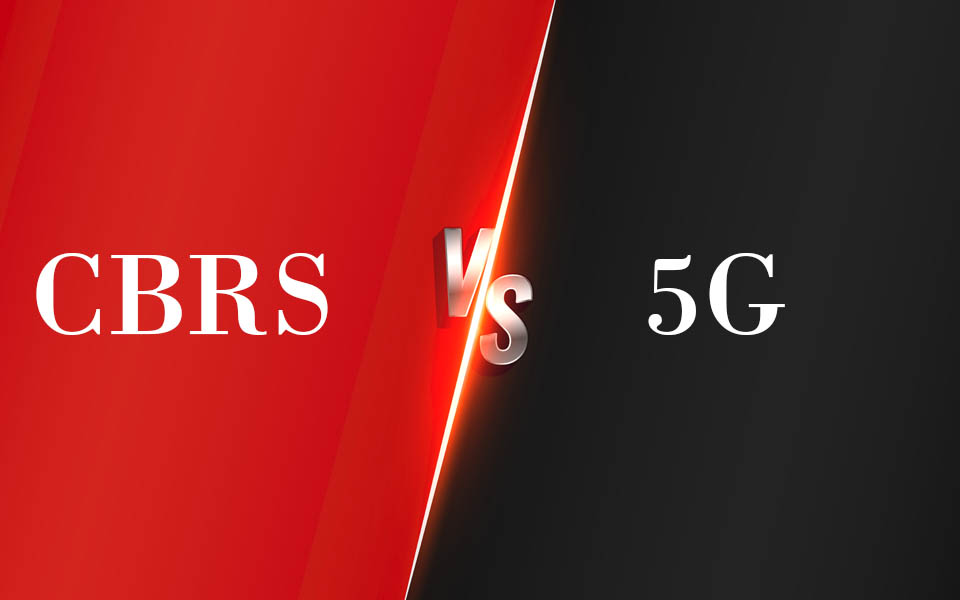Optimizing your CBRS Network with 5G Outdoor CPE Device
In the ever-evolving landscape of telecommunications, the advent of CBRS (Citizens Broadband Radio Spectrum) has ushered in a new era of connectivity and innovation. At the forefront of this transformation are Customer Premises Equipment (CPE) devices, pivotal in facilitating access to CBRS networks. In this comprehensive guide, we delve into the intricacies of outdoor CBRS CPE devices, elucidate their significance, explore deployment scenarios, and provide insights into selecting the optimal equipment for your network requirements.

Understanding CBRS CPE Devices
A CBRS CPE, synonymous with Customer Premises Equipment, serves as a gateway router within a CBRS-powered Private Mobile Network. It bridges the gap between end-users and service providers, enabling seamless access the CBRS spectrum.
The CBRS Spectrum
The Citizens Broadband Radio Spectrum, a 150 MHz block of spectrum, has been earmarked by the Federal Communications Commission (FCC) for private utilization. This spectrum is categorized into three tiers, each with distinct users and interference acceptance protocols.
– Incumbents: Reserved for governmental agencies, Navy ships, and fixed satellite stations, this tier prohibits any interference.
– Priority Access License: Allocated for commercial entities through CBRS auctions, this tier entails licensed commercial usage.
– General Availability Access: Representing the lowest tier, GAA mandates acceptance of interference from higher tiers, accommodating devices like mobile phones, small cell towers, and IoT devices.
The Role of CPE Devices in CBRS Networks
CPE devices serve as the cornerstone of network access provisioning, catering to a myriad of deployment scenarios. From indoor wall-mounted units to roof-mounted antennas, CPEs facilitate connectivity across diverse environments. Historically confined to Wi-Fi access, modern CPEs are evolving to operate within the 3.5 GHz/B48 CBRS spectrum range.
Diving into CBRS CPE Functionality
CBRS CPEs are meticulously designed to operate within CBRS spectrum parameters, ensuring compliance with FCC guidelines and efficient communication across all tiers. Central to this operation is the Spectrum Access System (SAS), a cloud-based coordinator tasked with managing CBRS devices and mitigating interference.
Examples of CBRS CPE Devices
CBRS CPE devices encompass a spectrum of service provider equipment, ranging from CBSDs (Citizen Broadband Service Devices) to standard Wi-Fi devices. It is imperative to select CBRS-capable CPEs during deployment, with options spanning indoor and outdoor variants tailored to specific environments.
Exploring Use Cases
CPE devices catalyze a multitude of applications, enabling companies and communities to extend coverage and democratize mobile access. Let’s delve into some quintessential applications:
– Closing The Digital Divide: CPE devices empower K12 schools to provide wireless broadband access, bridging the digital gap and facilitating remote learning initiatives.
– Smart Cities: Leveraging CBRS-powered private mobile networks, cities can revolutionize public infrastructure management, enhance public safety, and spearhead IoT initiatives.
– Mobile Sites: From rural construction operations to outdoor events, CPE devices facilitate high-speed connectivity, empowering seamless communication and resource access.
Configuring CBRS CPE Devices
Configuring a CPE device is a streamlined process, typically executed through a user-friendly web interface. With simplified instructions and pre-activated SIM cards, the setup process is further expedited, facilitating rapid deployment and network integration.
Key Considerations for CBRS CPE Selection
Selecting the right CPE device hinges on several crucial factors:
– FCC Certification: Ensuring compliance with FCC regulations for CBRS usage.
– Indoor vs. Outdoor Deployment: Tailoring CPE selection based on the deployment environment.
– Interface Support: Assessing LAN and WAN interface compatibility.
– Future-Proofing: Evaluating 5G compatibility and data rate support.
– FCC Power Grant Compliance: Ensuring adherence to FCC-mandated power limits.
The Horizon Powered Solution
Horizon’s 5G outdoor CPE device like the Horizon 25005G, is engineered to streamline the deployment of 5G connectivity in outdoor environments. These devices are purpose-built to empower enterprise IT teams and managed service providers with the tools needed to effortlessly implement 5G solutions and seamlessly integrate them into existing network infrastructures.
With Horizon’s solution architecture, the process of deploying 5G devices becomes highly automated, reducing the time and complexity traditionally associated with such installations. Whether it’s deploying a single device or scaling up to a network of hundreds or thousands, Horizon’s solution offers a streamlined approach that ensures quick and efficient deployment.
Moreover, Horizon’s devices are designed to seamlessly integrate with enterprise IT networks, allowing for smooth interoperability and minimal disruption to existing operations. This integration capability is crucial for organizations looking to leverage 5G technology for a variety of applications, such as high-speed internet access, IoT connectivity, or mission-critical communication systems.
By offering a range of models from 4G to 5G, like the Horizon 2100F12, 2400F20, and 25005G, Horizon caters to diverse deployment scenarios and performance requirements. Whether it’s high-density urban environments, remote industrial sites, or expansive outdoor areas, Horizon’s outdoor CPE devices provide reliable connectivity and robust performance, enabling organizations to unlock the full potential of technology for their specific use cases.
As CBRS continues to reshape the telecommunications landscape, CPE devices emerge as linchpins in realizing the full potential of private mobile networks. With Horizon’s innovative CPE solutions, organizations can embark on a transformative journey toward seamless connectivity, enhanced efficiency, and unparalleled innovation. Embrace the future of connectivity with Horizon CPE devices, empowering your network with reliability, scalability, and agility.








